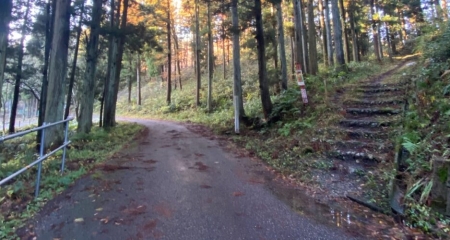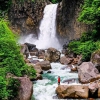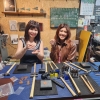So perhaps you’ve been to Tokyo, maybe Osaka, Kyoto, or even Nagasaki. You’ve seen much, but how well do you know the real Japan? When you venture off the tourist-beaten path and head into the countryside, you’ll gain a much broader perspective of the culture, history, and way of life of the country at large. If you take the bullet train north out of Tokyo, you’ll eventually find yourself in Niigata city. A brief 30-minute bus ride from the station there will bring you to a place called Niitsu, a gorgeous and rustic town with a surprising history.

I was fortunate enough to be offered a tour, so I leapt at the chance and went. We covered a lot of information throughout the tour, but the main topic stayed the same throughout: oil. While oil production didn’t make much of a splash for the humble village of Niitsu in ancient times, industrialization from the middle of the 19th century to the early 20th century made oil a popular commodity. Demand for Niitsu’s oil skyrocketed, and before long over 100 oil companies were operating just out of that small town. By 1917, the rapidly growing town of Niitsu became the largest producer of crude oil in Japan. So famous and important had Niitsu become, Emperor Taisho himself paid the place a visit. However, he reportedly wasn’t thrilled. “It stinks!” He famously remarked. In time, however, production slowed as the oil fields were voraciously reaped. By the time the 80s rolled around, Niitsu’s oil production had shrunk to a point of infeasibility. The last oil company pulled out, and a once-booming town has been slowly fading back into obscurity since. Nowadays, Niitsu’s remaining gas heats homes and water for the residents that remain. These people enjoy lower utility bills than the rest of the region as a result.

As we listened to this story of Niitsu’s rise and fall from glory, we walked the outskirts of town to see it for ourselves. Ruined buildings and trampled wilderness, not to mention an old footpath through a tunnel leading to nowhere, served to verify everything we were hearing. But despite some rubble, the path we followed through the wooded hills was a gorgeous one, completely reclaimed by nature and set aside as a park. Still, it’s not a place to be taken lightly; if you head off the beaten path, you run the risk of falling into one of the many 30m deep petroleum boreholes from Niitsu’s gas pumping heyday. At the end of our path, one such hole is on display. A steel lattice guarded its entrance for safety reasons, but we were still able to peer into its depths. Each one of these is at least 30 meters deep, we were told. And there were plenty of unfortunate accidents. We even had a minor mishap ourselves, when a photographer turned too quickly and his water bottle slipped out of his bag, straight down the borehole. We certainly won’t be seeing that bottle again!

As the sun began to dip low on the horizon, we headed back into town. On our way, we stopped at another place; a glassblowing workshop. It turns out that Niitsu wasn’t just all about oil. Their glassworks are some of the finest in Japan, second to none in Niigata. Generally speaking, making glass is an expensive process; vast amounts of heat are required to fuel the furnaces, and the melting point of glass is a whopping 1700 degrees Celcius. But thanks to the remaining gas drawn from Niitsu’s oil fields, the workshops had convenient access to cheap gas heating, and as a result, glassworking as an industry has thrived in Niitsu. Though the oil industry petered out completely a few decades ago, glassblowing has persevered, with one workshop, Akiha Glass, still open and profitable in the modern day. We were led inside where we were lucky enough to meet the master glassblower. Perhaps the most interesting fact that stood out in my mind was how the glass blowing techniques that they use in Niitsu originally come from Seattle, incorporated by the craftsmen of Niitsu for its efficiency and precision.

From there, we headed to the opposite building, Atelier Miharu, a separate business working in conjunction with Akiha Glass to sell their products. Here, we were able to enjoy a glass-fusing experience, where we decorated plates with small pieces of glass that, through heating and reheating, fused to the surface to make beautiful patterns. Seeing the glass making process itself was certainly fascinating, but viewing the finished products might have been the highlight of the entire trip. Necklaces, bracelets, plates, cups, bowls… if it could be made of glass, they had it there. And every piece was stunning; from the moment I walked in, I knew I was going to walk out at least a little bit poorer.

Thanks to this trip, I was able to explore this underrated gem of a town, just on the outskirts of Niigata city. There are amazing places all across the Japanese countryside, easily overlooked by the typical tourist hordes. Whether you’re in Japan already or planning your next trip and you’re going to be in or passing through Niigata, don’t miss out on Niitsu’s charming history and beautiful glassworks.
About the Author
Zac is an ALT that has been living and working in Murakami, Niigata for over a year. He’s avid hiker and traveler especially interested in exploring Japan’s history, culture, and wilderness. He loves exercise, katsu, and anyone willing to try understanding his crude, broken Japanese.









